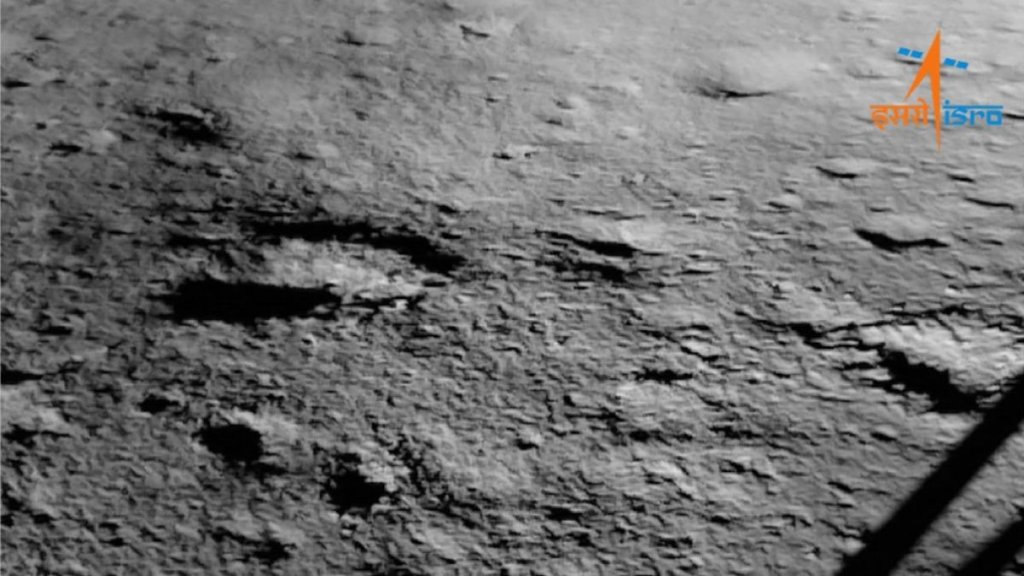
See 1st photos of the moon’s south pole by India’s Chandrayaan-3 lunar lander (Image Credit: Space.com)
The first images from India’s Chandrayaan-3 mission taken after the probe’s historic moon touchdown reveal a pockmarked surface near the lunar south pole.
The Indian Space Research Organisation (ISRO) shared the images on X, formerly Twitter, on Wednesday (Aug. 23), about four hours after the Chandrayaan-3 spacecraft completed its smooth descent.
The first set of four images were taken by the lander’s Horizontal Velocity Camera as it was nearing the surface of the moon. An additional image from the Landing Imager Camera, shared a little later, shows a glimpse of the landing site, including a portion of the spacecraft’s landing leg and its shadow.
“The communication link is established between the Ch-3 Lander and MOX-ISTRAC, Bengaluru,” ISRO said in a post on X. “Chandrayaan-3 chose a relatively flat region on the lunar surface,” the agency added in the subsequent post.
Related: India on the moon! Chandrayaan-3 becomes 1st probe to land near lunar south pole
The landing made India only the fourth country in history to successfully put a spacecraft on the surface of the moon, after the United States, the former Soviet Union and China. Chandrayaan-3 is also the first spacecraft in history to touch down near the lunar south pole, an area that is currently attracting the attention of scientists and space agencies from all over the world.
Scientists think that the permanently shadowed polar craters contain water ice trapped in the rocks, which could be extracted and used to support a permanent human presence on Earth‘s natural companion. Moreover, these lunar craters could be used to build next-generation telescopes that would allow astronomers to see farther than they can today.

A small rover called Pragyan arrived on board Chandrayaan-3 and will soon deploy and commence its exploration of the exciting region, so many more fascinating images are likely to come soon. Both the rover and the lander, however, are unlikely to remain operational for more than two weeks, as ISRO doesn’t expect the vehicles’ batteries to make it through the two-week lunar night.
Chandrayaan-3 was India’s second try at landing near the moon’s south pole. The country’s first attempt at a lunar touchdown, in September 2019, failed when the Chandrayaan-2 lander crashed into the moon due to a software glitch.
India’s triumph comes only three days after Russia lost its Luna-25 mission, its first attempt to put a spacecraft on the moon’s surface in 47 years. Luna-25, too, was aiming for the lunar south pole, but crashed into the moon instead after a botched orbital maneuver on Saturday (Aug. 19).





